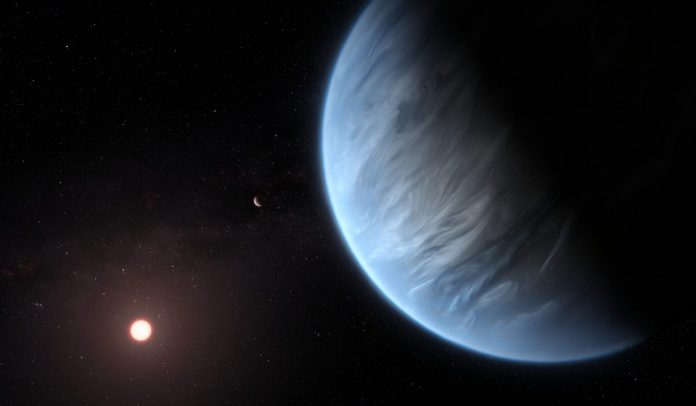Scientists announced another exciting discovery today (September 11, 2019) regarding potentially habitable exoplanets. For the first time, they’ve detected water vapor in the atmosphere of a distant super-Earth – called K2-18b.
K2-18b is similar to Earth in size (though about twice as big) and because it lies within the habitable zone of its parent star. Otherwise, it’s quite different: The exoplanet is estimated to have temperatures that range between -100 and 116 degrees Fahrenheit, and is thought to be roughly eight times as massive as Earth, harboring what’s likely a hydrogen-rich atmosphere that extends far out into space. But though its atmosphere may contain water vapor, the surface of K2-18b is likely not covered in oceans.
“These planets are not going to look a thing like Earth,” Sara Seager, an exoplanet expert and professor at MIT who was not involved in the recent research, told The Verge. “It’s definitely not rocky as we know a rocky planet to be.”
Studying distant exoplanets like K2-18b is incredibly difficult, as Ingo Waldmann, an astrophysicist at the University College London and one of the authors of a study recently published in Nature Astronomy study, told The Verge.








